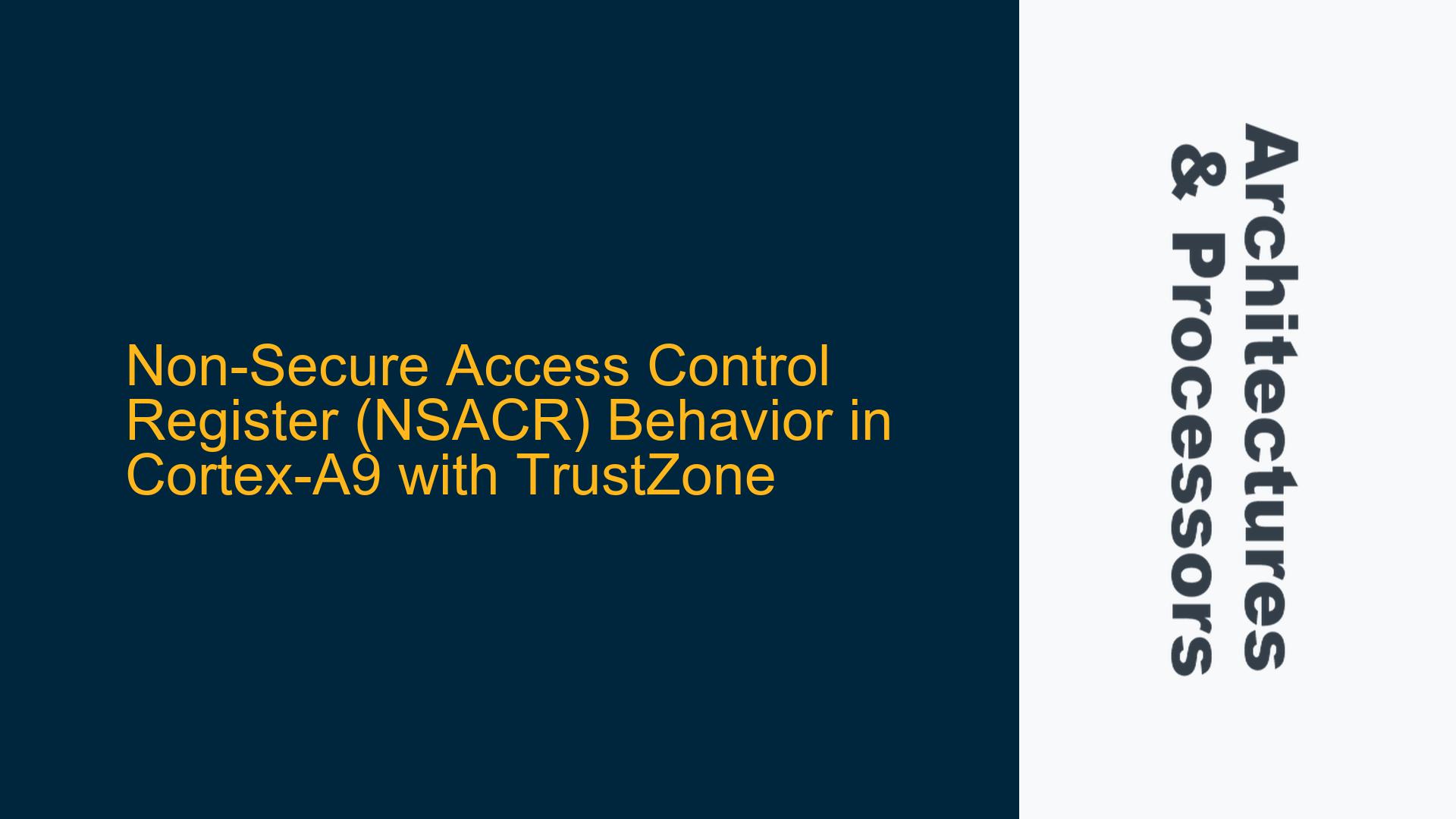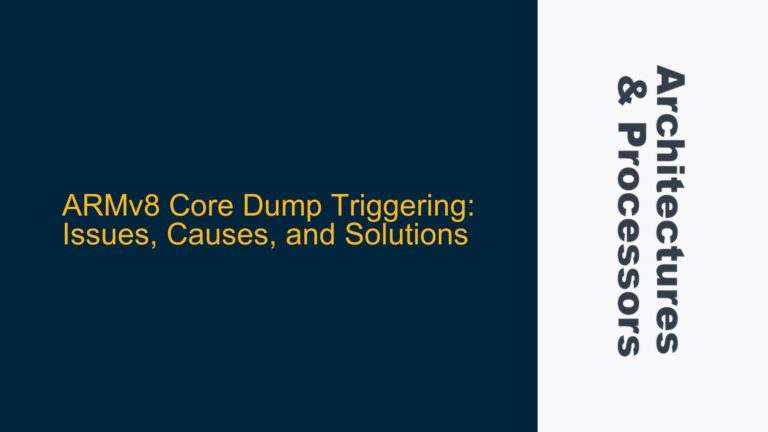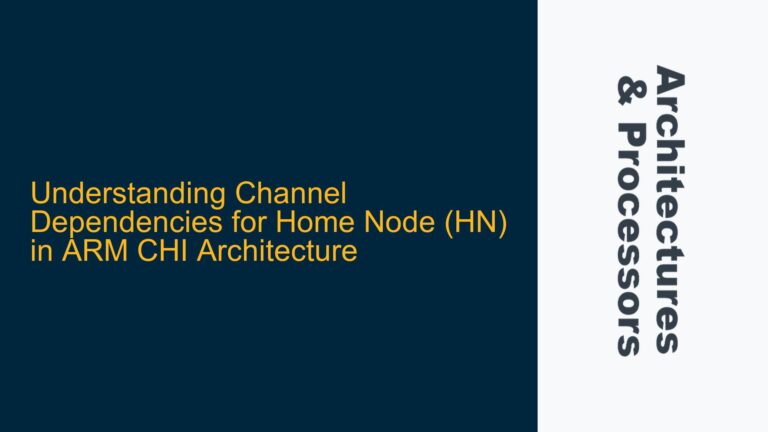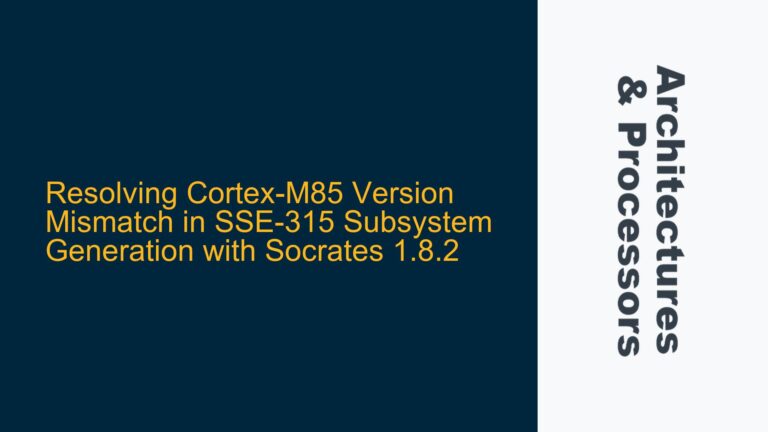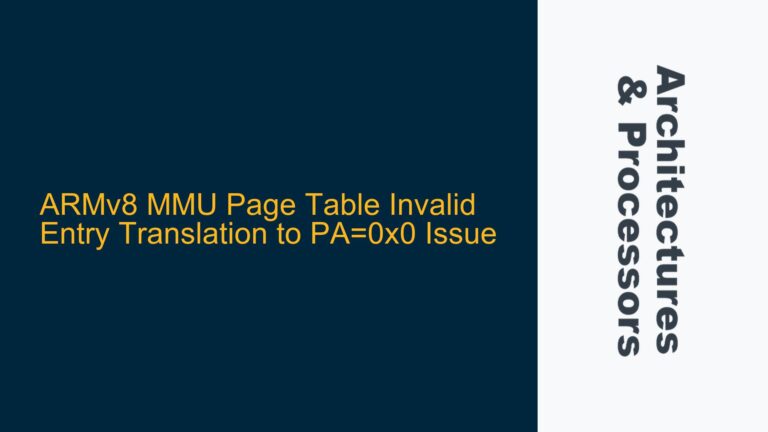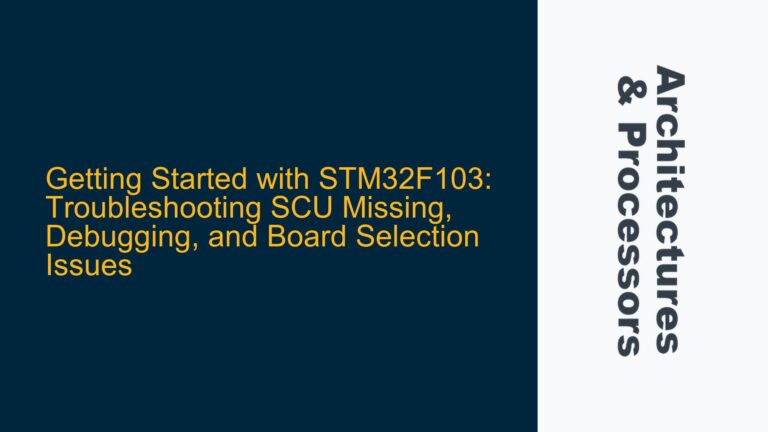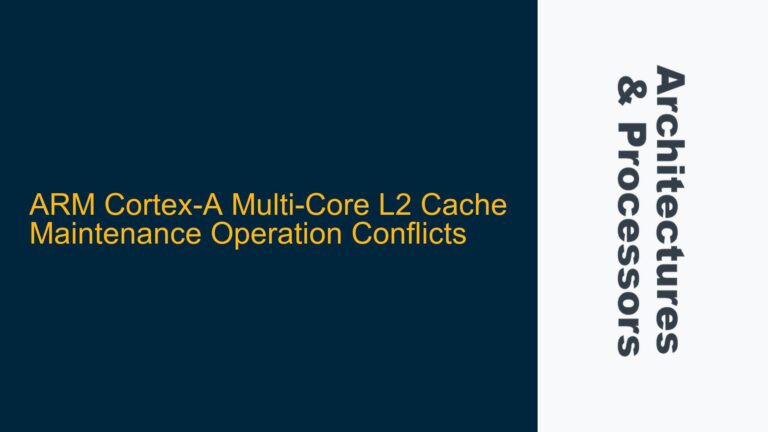NSACR.TL Bit Flipping and Aperiodic Changes in Non-Secure State
The Non-Secure Access Control Register (NSACR) in ARM Cortex-A9 processors with TrustZone technology is a critical register that governs access to certain features and functionalities in the non-secure state. One of the key bits in this register is the NSACR.TL bit (bit 17), which controls whether lockable Translation Lookaside Buffer (TLB) entries can be allocated in the non-secure state. In the provided scenario, the NSACR.TL bit is observed to change aperiodically, leading to inconsistent behavior in the non-secure state. This issue is particularly problematic because the NSACR.TL bit is supposed to be modified only in the secure state, yet it appears to be changing unpredictably in the non-secure state. This behavior raises questions about the integrity of the secure state transitions, the role of the bootloader, and the interaction between the secure and non-secure worlds in a TrustZone-enabled system.
The NSACR register is part of the ARMv7-A architecture and is used to control access to certain features in the non-secure state. The NSACR.TL bit, in particular, is used to control whether lockable TLB entries can be allocated in the non-secure state. When this bit is set to 1, lockable TLB entries can be allocated in the non-secure state, and when it is set to 0, they cannot. The NSACR register can only be modified in the secure state, which means that any changes to this register must be made by software running in the secure world. However, in the observed scenario, the NSACR.TL bit is changing aperiodically in the non-secure state, which suggests that there may be an issue with the secure state transitions or the interaction between the secure and non-secure worlds.
The Cortex-A9 processor, which is used in this scenario, supports ARM’s TrustZone technology, which provides a hardware-based security mechanism that divides the system into secure and non-secure worlds. The secure world is used to run trusted software, such as a secure monitor or a trusted operating system, while the non-secure world is used to run untrusted software, such as a general-purpose operating system like Linux. The NSACR register is part of the secure world’s control over the non-secure world, and any changes to this register must be made by software running in the secure world. However, in the observed scenario, the NSACR.TL bit is changing aperiodically in the non-secure state, which suggests that there may be an issue with the secure state transitions or the interaction between the secure and non-secure worlds.
Secure State Transition Issues and Bootloader Configuration
The aperiodic changes in the NSACR.TL bit can be attributed to several potential causes, including issues with secure state transitions, improper bootloader configuration, and unintended modifications by privileged software in the non-secure state. One of the primary causes of this issue is the improper handling of secure state transitions by the bootloader or the secure monitor. In a TrustZone-enabled system, the bootloader is responsible for initializing the system and transitioning the processor from the secure state to the non-secure state. If the bootloader does not properly configure the NSACR register before transitioning to the non-secure state, it can lead to unpredictable behavior in the non-secure state.
Another potential cause of the aperiodic changes in the NSACR.TL bit is the improper configuration of the Secure Configuration Register (SCR). The SCR is a control register that determines the security state of the processor and controls access to certain features in the secure and non-secure states. The SCR.NS bit (bit 0) is particularly important, as it determines whether the processor is in the secure state (SCR.NS = 0) or the non-secure state (SCR.NS = 1). If the SCR.NS bit is not properly configured, it can lead to unintended modifications of the NSACR register in the non-secure state.
Additionally, the aperiodic changes in the NSACR.TL bit could be caused by privileged software in the non-secure state attempting to modify the NSACR register. Although the NSACR register is supposed to be modified only in the secure state, it is possible for privileged software in the non-secure state to attempt to modify this register, especially if the secure state transitions are not properly handled. This can lead to unpredictable behavior in the non-secure state, including aperiodic changes in the NSACR.TL bit.
Implementing Secure State Transitions and NSACR Management
To address the aperiodic changes in the NSACR.TL bit, it is necessary to implement proper secure state transitions and NSACR management. This involves ensuring that the bootloader and secure monitor are properly configured to handle secure state transitions and that the NSACR register is properly managed in the secure state. The following steps outline the process for implementing secure state transitions and NSACR management in a TrustZone-enabled system.
First, it is important to ensure that the bootloader is properly configured to handle secure state transitions. The bootloader should initialize the system and configure the NSACR register before transitioning to the non-secure state. This involves setting the NSACR.TL bit to the desired value and ensuring that the SCR.NS bit is properly configured to indicate the security state of the processor. The bootloader should also ensure that the secure monitor is properly initialized and that it is capable of handling secure state transitions.
Second, it is important to ensure that the secure monitor is properly configured to handle secure state transitions. The secure monitor is responsible for managing the transition between the secure and non-secure states and should be capable of handling any requests to modify the NSACR register. The secure monitor should also ensure that the NSACR register is properly managed in the secure state and that any changes to this register are made only in the secure state.
Third, it is important to ensure that privileged software in the non-secure state does not attempt to modify the NSACR register. This can be achieved by implementing proper access control mechanisms in the secure monitor and ensuring that the NSACR register is only accessible in the secure state. The secure monitor should also monitor any attempts to modify the NSACR register in the non-secure state and take appropriate action to prevent unauthorized modifications.
Finally, it is important to verify that the NSACR register is properly managed in the secure state and that any changes to this register are made only in the secure state. This can be achieved by implementing proper testing and verification procedures to ensure that the NSACR register is properly managed in the secure state and that any changes to this register are made only in the secure state.
In conclusion, the aperiodic changes in the NSACR.TL bit in a Cortex-A9 processor with TrustZone technology can be attributed to several potential causes, including issues with secure state transitions, improper bootloader configuration, and unintended modifications by privileged software in the non-secure state. To address this issue, it is necessary to implement proper secure state transitions and NSACR management, including ensuring that the bootloader and secure monitor are properly configured to handle secure state transitions and that the NSACR register is properly managed in the secure state. By following these steps, it is possible to ensure that the NSACR register is properly managed in the secure state and that any changes to this register are made only in the secure state.
